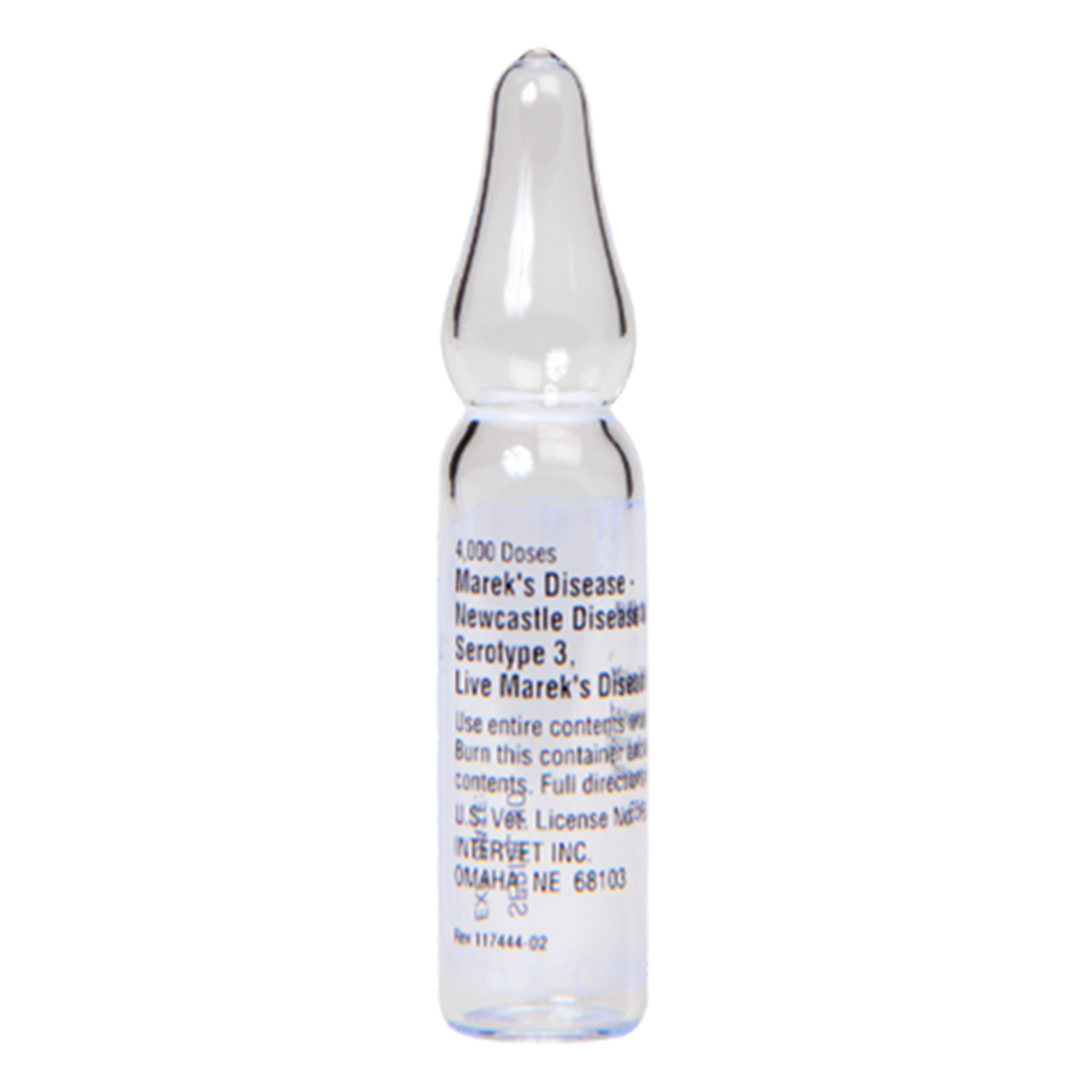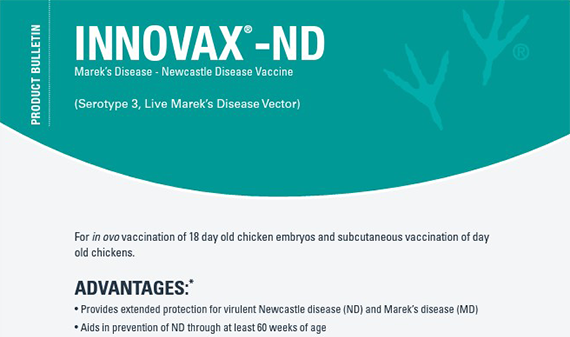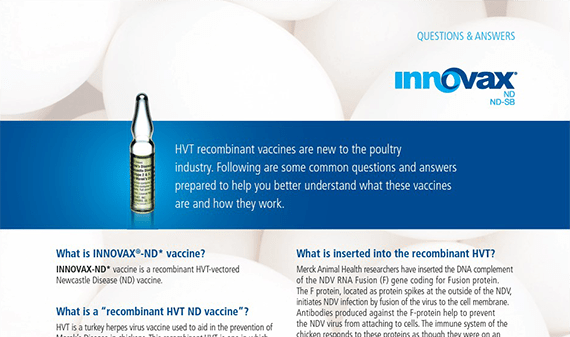INNOVAX®-ND
Marek’s Disease – Newcastle Disease Vaccine
Product Description
Innovax®-ND is a frozen, live, cell-associated ND and MD vaccine. It provides proven protection against virulent ND virus and MD. It is approved for in ovo injection of 18 day embryonated eggs and subcutaneous vaccination of day old chickens.


Indications
This product has been shown to be effective for the vaccination of healthy 18- day-old chicken embryos, or one-day-old chickens, against Marek’s disease and Newcastle disease. Duration of immunity has been shown to be at least 60 weeks by the subcutaneous route and 10 weeks by the in-ovo route for Newcastle Disease.
Advantages*
- Provides extended protection for virulent Newcastle disease (ND) and Marek’s disease (MD)
- Protects against ND through at least 60 weeks of age
- Offers effective protection in the face of ND virus maternal antibodies
- Replaces a conventional live ND vaccination program in the absence of exotic ND
- Removes the potential for respiratory reactions due to live ND vaccines
- Allows the use of monovalent infectious bronchitis (IB) vaccines, improving IB protection
- Offers flexible administration via in ovo or subcutaneous injection to fit any vaccination schedule
Diseases/Parasites
Vaccination Programs
Many factors must be considered in determining the vaccination program for a particular farm or poultry operation. To be fully effective, the vaccine must be administered to healthy receptive birds held in proper environment under good management. In addition, the response may be modified by the age of the birds and their immune status. Seldom does 1 vaccination under field conditions produce complete protection for all individuals in a given flock. The amount of protection required will vary with the type of operation and the degree of exposure that a flock is likely to encounter.
Method Of Vaccination
- For in ovo administration: inoculate each 18-day-old chicken embryo with a full dose (0.05 ml or 0.1ml).
For subcutaneous administration: inoculate each day-old chicken with a full dose (0.2 ml). - Use entire contents of diluent bag within 1 hour after mixing.
- After reconstitution, the vaccine should be kept cool and gently agitated frequently.
Supplied
1 x 2000 dose ampules
1 x 4000 dose ampules
Cautions
- VACCINATE ONLY HEALTHY CHICKENS AND CHICKEN EMBRYOS.
- Do not mix with other products, except as specified on this label.
- Store vaccine in liquid nitrogen at a temperature below -150°C (-238°F).
- ONCE THAWED, THE PRODUCT SHOULD NOT BE REFROZEN.
- Do not vaccinate within 21 days before slaughter.
- Contains gentamicin as a preservative.
- Inactivate unused contents before disposal.
- In case of human exposure, contact a physician.
- FOR ANIMAL USE ONLY.
Notice
This vaccine has undergone rigid potency and purity tests, and meets Merck Animal Health, U.S. and local regulatory requirements. It is designed to stimulate effective immunity when used as directed, but the user must be advised that the response to the product depends upon many factors, including, but not limited to, conditions of storage and handling by the user, administration of the vaccine, health and responsiveness of the individual chickens, and the degree of field exposure. A safety data sheet (SDS) is available upon request. This and any other consumer information can be obtained by calling Merck Animal Health Customer Service at 1-800-211-3573.
Records
Keep a record of vaccine, quantity, serial number, expiration date, and place of purchase; the date and time of vaccination; the number, age, breed, and locations of chickens; names of operators performing the vaccination and any observed reactions.
Contact our sales or technical services representatives to help design a custom vaccination program.
Why Choose INNOVAX-ND

INNOVAX®-ND
Resources
For additional information, please see the product label.
For more information regarding efficacy and safety data, go to productdata.aphis.usda.gov.
References
*Data on file, Merck Animal Health

To view our complete product lineup, click to view our
POULTRY PRODUCT CATALOG vol. 3.1.


